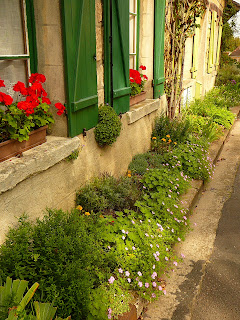A few weeks ago I was in Auvers-sur-Oise, the village just north of Paris where Van Gogh spent his last 70 days.
The stone cottages and their gardens are still much as he painted them, but the little lanes are now brightened by masses of flowers along the verges. This planting intrigued me - too co-ordinated to be self-sown, but not regimented like a municipal scheme. How had they got there? Who was looking after them?
The answer was on a nearby poster. They’re part of a project, “Je Jardine Ma Ville” where, in return for free plants and compost, residents create and maintain flower beds in public spaces outside their homes. Some 160 volunteers of all ages have put in around 10,000 plants, many of which are pictured on the poster for easy identification. Apart from the occasional sunflower so loved by Van Gogh, most are perennials so should bring colour to Auvers for many years to come.
Back in London, I checked the progress of a similar, if smaller, scheme beautifying the bare soil round street trees in Willesden Green’s Blenheim Gardens. Last spring a handful of volunteers put in hundreds of flowering plants, and many residents ‘adopted’ the tree pits outside their homes and even donated seedlings from their own gardens. Now they're planting 2,500 bulbs (see left), from snowdrops and jonquils to bluebells and tulips. Spring should see an explosion of colour.
For more on Van Gogh in Auvers, see http://aboutmygeneration.com/2011/10/21/auvers-sur-oise-van-goghs-final-resting-place/




